Whether you are stranded in the ocean due to a plane crash, a sinking boat, or getting swept out to sea by an undertow, the isolation of being stranded in the ocean can be a frightening experience. Situational awareness is a must in any kind of environment. By following the survival tips and hacks in this section, you’ll learn some strategies to keep yourself alive until rescue arrives. We want to share our audience insights of survival in the middle of a sea or an ocean.
Disclaimer: The survival tips on this website are for informational purposes only. The authors take no responsibility for the reader’s individual actions or usage of the information presented on this page.
1. STOP and Think

You’ve just discovered that you are stranded in the ocean. You’re unsure about whether or not rescue will be arriving. Here is the list of survival actions:
- Stay afloat.
- Don’t panic!
- Find shelter during the day.
- Wait to see if rescue arrives.
- Travel at night in the same direction until you reach civilization.
- Focus on finding food and water.
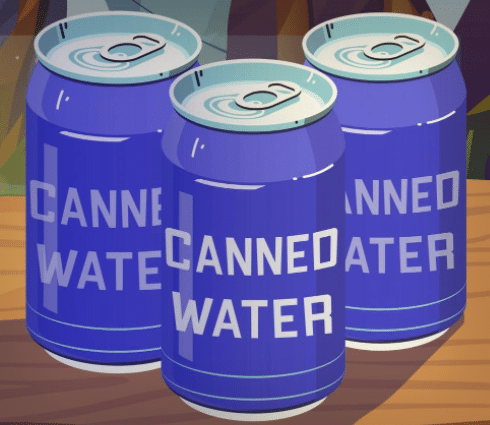
Read our detailed article to discover the best tips on survival in the open water and be prepared!
2. Don’t Panic!
Panic is a great energy thief: while you splurge your nerves out onto meaningless regrets and fatal thinking, the better way is to keep cool, calm, and collected. It won’t guarantee your ultimate survival; however, you will have more chances of survival if you focus on getting yourself out of danger asap. Obviously, this is a good place to start, but more can maximize the odds you stay alive amid the seawater. Being calm ensures your safe way back to the shore.
3. Floating in the Sea
In this part, we will discuss floating to survive. Your priority, when isolated in the open sea, is to stay afloat. This means that you need to find any floating items that will support you within swimming distance. Your preference would be a lifeboat or raft, but any item will be better than exerting the energy required to paddle and keep yourself afloat. A professional diver can handle such surviving at sea better off, but there are techniques available for even unprepared persons.
If there are no floating items to hold onto and you are stranded in the ocean completely on your own, then use the following techniques to keep yourself from exerting energy from having to paddle. Look at the information below; it will maximize your chances to survive in the seawater:
Calm Water Back Floating:
Step 1: If the water is calm, then lie on your back.
Step 2: Allow your body to float, but keep your head above the waterline.
Step 3: Continue to lie like this until you are rescued or come within swimming distance of land.
Rough Water Front Floating:
Step 1: If the water is rough, lie face down in the water allowing your body to float. The body temperature will drop anyway, but you will have a chance to remain on the surface.
Step 2: Continue to float this way until you need air.
Step 3: Lift your head from the water only to take a breath, then bring it back down again, exhaling underwater.
The rest of this guide’s steps assume that you are on a raft or other similar floatable structure that allows you to stay out of the water and move about with relative ease.
4. Ways of Floating in the Open Water
There can be several ways you can get stranded out in the open sea, all different in the guidelines you have to heed to survive, but all based on the success stories of miraculous survival and recommendations from highly-experienced masters of survival from the Navy. Let’s delve into details and instructions concerning survival given the following means of sailing in turn:
A Broken Boat
You are a lucky one if you have some minimal food storage, drinking water, a few basic equipment items, and, most importantly, the vessel. All these maximize your chances to get on land safely manifold. With water everywhere, these essentials are your guarantee to live on a bit longer, at least.

You should keep being active by engaging in fishing and exercising while drifting on the sea. In the unfortunate case of a sea storm, you will be exposed to serious threats, but you will still have more chances of survival with a vessel than without one.
If your boat needs repairs, such as plugging a tear or dealing with a leakage, you should immediately avoid sinking. When you don’t have a proper multi-tool, Use everything you can find around capable of helping you eliminate threats of submerging in the middle of the sea.
A Life Raft
A raft will keep you safe in the open sea for some time. It is not as convenient as a vessel, but the odds your savior starts sinking are greater. Today’s rafts undergo thorough testing and meet modern durability requirements. They are typically equipped with additional survival items like whistles, for example.
Rafts come in different sizes and materials. Here are the tips on what an ultimately safe raft should have:
- Deck with a roof
- Rows
- Reliable floor
- Buckets
- A ladder
- A Flare Gun
- Water reservoirs
- Means of signaling
- Tape (Reflective type)
- Means of fishing
While a modern raft is often costly, it can seriously brighten up your open sea survival pursuit.
Nothing but You
Without a boat or a raft, it will be challenging to survive in the ocean. A life vest will likely keep you drifting, but you will be without food and water and will get cold soon. Try to keep your limbs close to the body, take a fetal position, and pull knees to your chest to avoid hypothermia. This is called the H.E.L.P. — Heat Escape Lessening Position.
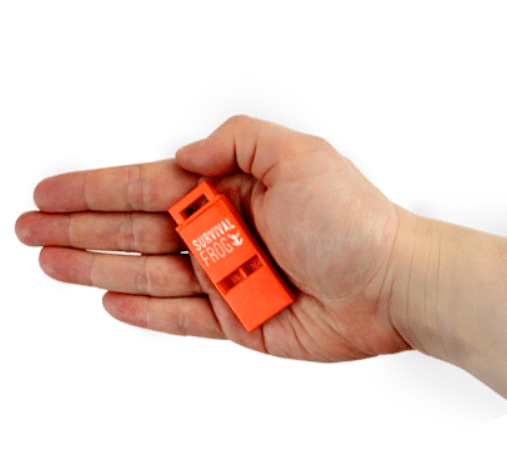
- Keep your body above water to avoid the loss of heat and hypothermia.
- A life jacket will be of great use.
- Insulate your head as much as possible
- Use both horizontal and vertical position of your body in water.
- If you are not alone, keep closer to your companions. Huddle and make a circle to prevent dramatic heat loss
- If you are drifting alone, don’t attempt to swim all the time: you will lose your energy and heat immensely. Stay in the HELP position described earlier to increase your chances of survival.
- If you have a survival whistle, blow it mighty in rows of three blows, make pauses, and repeat again.
5. Avoid Hypothermia
The odds are that the water you are drifting in is cold, which entails hypothermia. The term stands for a situation when your body produces less heat than it loses. If you have the chance, get dried as soon as possible: your chances for survival will increase accordingly. Wrap yourself in layers of clothes: focus on insulating your head first. If you are not alone, huddle to keep warm or get into a sleeping bag if you are lucky to have one. Read the information below to find out how stars can save your life.
6. Survival Navigation
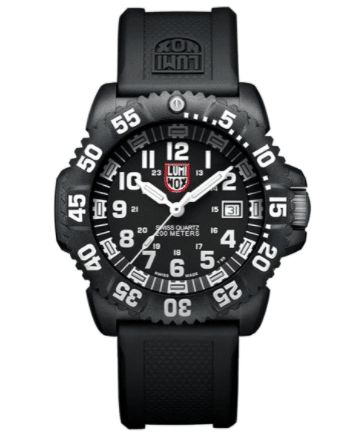
When you don’t have a survival watch like this one with a compass, the option for sea survival is orienting using the stars. Find the brightest star in the sky: this is the North Star. Find the Big Dipper and make a line in your head, connecting the stars at the Dipper’s end and its bowl. Mentally prolong the line until you hit Polaris, the North Star. The Big Dipper is easy to find in the sky with bare eyes. The next part is devoted to the essential resource — water.
7. Finding Water
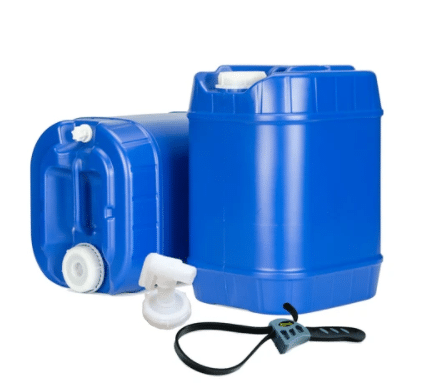
Sources of Drinking Water
Recycled Water (Urine):
There have been stories of people using urine as a last resort to replenishing the body to survive. The truth is that many survival instructors (as well as the US Army Field Manual) advise against drinking urine as a means of hydrating the body. The salts in urine will worsen dehydration and make you even more thirsty. So, never drink your urine.
Rain Water:
If it rains, try to set out as much material as possible to collect it and funnel it into containers.
Before bottling rainwater that has fallen into the raft, make sure it hasn’t mixed with ocean saltwater that may have also splashed into the raft.
Fish Liquids:
Fish not only provide a source of food, but they also contain the liquid in their flesh, eyes, and spine. To extract the liquids, cut open the fish, break the vertebra, and suck.
Drinking Salt Water:
Ocean saltwater should be off-limits as it might cause kidney failure.
While this guide recommends against drinking saltwater, others may disagree based on Dr. Alain Bombard’s experiment in 1952.
In 1952, Dr. Bombard deliberately drifted across the Atlantic for 65 days without provisions of any kind to prove that it was possible to survive on plankton, saltwater, and raw fish. Since he was alone, it is unknown how much saltwater he consumed in proportion to rainwater or liquid squeezed from fish.
His experiment showed that it is possible to survive many days in the open water without anything but your raft and your survival skills.
8. Finding Food
Since digestion requires water, it’s probably better not to eat unless you have an adequate drinking water supply. The food sources available in the ocean are fish, plankton, and as a last resort, cannibalism. Finding food is essential for survival, so you should focus on that. A fishing line is the ultimate device, but you may not have it with you. Read on and find out what device you can make using things at your disposal.
Fishing
Seas are full of nutrition sources; you only need to catch them. To catch fish, you need access to some type of fishing equipment. You can fashion lines from any rope or string (e.g., shoelaces). If you have a knife, aluminum can be used to create shiny hooks that attract fish. A robust line will provide you with plenty of fish.
Tiny fishes will gather under your raft if you have one. You can try catching them to eat. Use items at your disposal to create a makeshift fishing line: find anything glittering to entice the fish and tease it with bait to catch it. Be careful with sharp objects that can ruin your raft and your chances of survival. You can take out the fish’s guts and make a bait to catch bigger fish.
Seabirds
Sometimes, it is easier to catch a bird than a fish. The meat from a sea bird is a good source of nutrition; you need only to catch one. Take out their feathers and skin the body. If you don’t mind, you can eat seabirds uncooked. Use the leftovers as baits to entice fish.
Plankton as a Food Source
In the ocean, opt for eating plankton: it is great in terms of nutrition and saturated with vitamin C. Gather plankton at night, closer to the sea’s surface. You can create a makeshift net from your clothes to collect it.
Seaweed Foraging:
Pull in any seaweed that you come across and look through it to find edible fish, crabs, or shrimp.
Cannibalism:
Some would rather die than resort to this, but if a fellow survivalist dies from starvation or dehydration, their flesh can be used as a nourishment source.
Remember, this is survival, and while the idea of cannibalism isn’t the most appetizing, it is a way to allow one person to survive to get home to their family in one piece.
You might want to make a pact with the group that if anyone dies, it’s ok to use their deceased body as a source of nourishment to survive.
9. Traveling/Resting
In the open ocean, there’s not a lot of options regarding controlling where you go.
Your best chance of survival relies on the current taking you to land or getting rescued.
While you practice the other techniques in this section, simply allow the current to take you where it must. Don’t waste your energy trying to fight it.
Only when you see the shore is within paddling distance should you take the time to paddle ashore.
If you see a ship in the distance, you’re more likely to get rescued by signaling it rather than paddling toward the ship. Read on to discover more sea survival tips.
10. Shelter in the Open Water
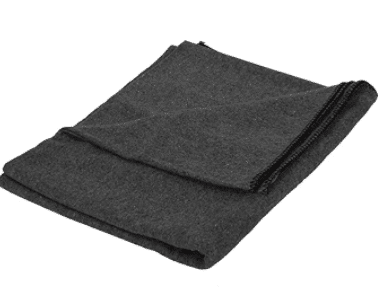
If you manage to take shelter in a boat or a raft, it will increase your chances of survival in the middle of the sea manifold. Make a cover to protect from rain and winds. Read on to find out more information and survival tips on creating shelter in the open sea.
Sea Sheltering Tips
- Keep being warm and dry: you understand the purposes.
- Avoid overheating or extreme cold with the help of any kind of extra clothes.
- Huddling with other survivors is a thing to keep in mind to keep warm.
- Make movements and do exercises to keep warm on the vessel: it will increase blood flow several times.
- Keep the floor dry
- Cover all people with a sail or a parachute if you have any
- Avoid piercing the raft.
- Put seawater out of the raft to avoid sinking.
11. Clothing at Sea
Staying warm and dry is among essential survival tips in most situations, and sea survival is not an exception. Windscreens are usually helpful to keep away from the wind’s cool. You need to take care to put off, dry, and replace wet clothes you wear atop of all the others to prevent the latter from getting dump and being yet another cooling factor. Warm socks, headgear, gloves, and the like must be dried for the same reason. You should keep sheltered and wrap yourself in some warming things you can find once you have no other chance to warm up. The flooring of the boat or a raft should be insulated to prevent your feet from cooling down. If you have life vests, keep them on at all times: the ways of the sea can be suddenly changing.
If you are not alone, huddle, and keep as close to each other as possible: it will increase the likelihood of being safe. Perform some exercises to accelerate the blood in your body and get extra warmth: move your toes and fingers, massage your neck and shoulders to avoid muscular aches and spasms. Cover all the groups on your vessel with a kind of blanket to keep everybody warm.
Armpits are great to warm up your hands; face muscles are to be trained, too: it will help avoid frostnip and frostbite. When the body shivers, it generates extra warmth. On the other hand, when continuous, it can entail spasms. Extend a helping hand to the acutely suffering: give them more water. Eating much is no good in survival situations. If you have a substantial food source and the ability to ration it equally, try to keep these edible things for as long as possible. Think and act along these lines and mind our information tips and techniques, and your chances to survive will increase.
It will help a lot if you are prepared and have some extra clothes or some survival gear items, such as insulated suits, vests, etc.
12. Surviving in Warm Oceans
The part is about a warm ocean survival situation: while it sounds more pleasant, it is as hard as surviving in the cold water. People who get stranded in the warm open seas have to struggle for their life not a bit less. While the major things to rest your eyes upon are nearly the same as in the case with cold waters, here is some distinctive information to keep in mind to increase your chances of survival and getting back home:
- Protect yourself from the heat of the Sun,
- Engage in finding food and drinking water,
- Cover your body with all clothes you have to avoid sunburns
- Protect your eyes, too
- If the heat is overwhelming, soak clothes in the cold water and apply them to your body parts.
13. Beware of Sharks
The most common predatory threat in the open water are sharks, so you will need to avoid attracting them at all costs. Do not allow any cuts to get in the water so as not to attract the sharks. Keep in mind each word from the list below:
- Keep swimming together
- Try to get closer to the shore asap
- No swimming at night because this is the most active time for some sharks
- Avoid water if you have a bleeding wound: it will entice sharks
- No glittering metal things: they work as bait
- Don’t swim with big schools of fish
- If you see a shark, try staying in the distance to avoid dangers
- Bright clothes in water can attract sharks
- Try to produce fewer splashes and avoid sudden movements
- Avoid groups of porpoises: sharks usually accompany them
- Avoid touching a shark
- If attacked, try to swim away asap
Otherwise, act aggressively if you don’t have anything else to do. Both techniques have been successfully used by survivors worldwide.
14. Getting Rescued
Your best chance of getting rescued is to stay near the location of where the rescue party will most likely be searching for you.
If you are stranded in the ocean due to a downed airplane, try to stay near the crash site.
The ideal signal to use for rescue planes would be a flare gun. If you don’t have a flare gun, use mirrors or any other reflective surface to signal any within sight planes.
If there is more than one raft, join rafts to help increase your visibility from the sky.
Getting to Sea Shore
The next page of your journey back to civilization out of the open sea survival situation. In this part of our article, we will tell our audience about the main things to consider to get back to the shore alive.
It can get not always simple for the rescuers to locate the whereabouts of a stranded ship, let alone a person floating alone on the spiky waves of the oven, striving to survive. A lot depends on your own ability to use the essential survival techniques or on your using special items of survival equipment if you are lucky to have any to back your survival pursuit. Your ability to adjust and improvise also counts.
Finding Land and Reaching Shore
In the ocean, be observant and try to locate the direction of the shore. If you are not alone, assign guards and make shifts not to fail to see the shore.
Read on to get more survival information and learn tips about important skills you need to survive in the open ocean.
Signs of Land
Look out for these signs showing the vicinity of land:
- Dark deep waters of blue or green colors. The lighter it is, the shallower the water is a right hint of land.
- Pieces of wood or leaves is a sign of the nearby land.
- If you see birds, indicate the direction of their flight during the day and night. In the day time, they look for food. Close to the night, they usually head homewards.
- MInd the wind direction
- Shallow waters
- In warm seas, the green shade to the sky is a sign of a nearby coral reef.
- Cumulus clouds moving about.
- In cold waters, ice or snow areas give the clouds the touch of light color, unlike the open sea color.
- Lookout for tidal waves
- If the swell decreased, but the wind keeps blowing continually, the island must be near.
- Fog and rain can blur your vision, so rely on your hearing to percept any sounds or your nose to smell any odors.
- The sea waves are changing patterns: your way back is close.
Reaching Shore
Use these tips to reach the shore and finally rest and find help:
- If you see the shore, locate the nearest beach to drift towards it.
- Wait for the daytime to get ashore.
- Protective clothing will be of much help while drifting through coral reefs.
- Giant cliffs are no good for getting ashore.
- Beware of breaking surfs
- Sandy beaches are more preferable.
- Usually, waves go in sets of seven. Choose the lightest one for your landing.
- Swim feet-first in rocky areas
- Avoid being capsized while surfing and try swimming between waves.
- Remain in your vessel until you reach the shore
- Avoid sea rip currents: they take you back into the ocean.
- Try to swim up to the surface when caught by a big wave.
- Avoid spots where water rushes its waves onto the rocks on the land.
- Once you have landed, you become a coastal survivor, a far better survival situation than sea survival.
14. Be Prepared
Preps and developed survival skills are great in terms of survival, and not only in the ocean. So before you embark on some potentially dangerous trip, mind taking care of the survival gear that might brighten up your spirit in any survival situation. You should think about taking the following:
- Survival Kit is the number one helper in sea survival.
- First Aid Kit will be handy as well.
- Flare Gun is your chance to be noticed.
Ocean survival is not a rare occasion, so the chances are that you can get into it one day. And if so, your knowledge of essential information about open sea survival can be of great assistance. Having a robust plan increases your chances manifold.
Being in a good physical condition increases the odds of surviving in the ocean significantly, as well as the condition of your mental health. The skills that you have can add up to your successful survival. One more important thing is your nervous sustainability and the ability to problem-solving. There are times when your collectedness can save your life.
15. Have Survival Gear
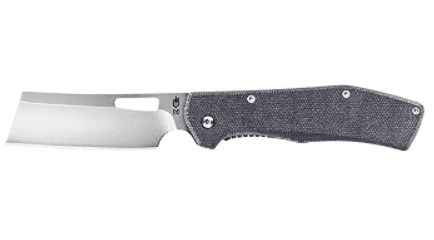
If you are on a boat, there must be some useful stuff or some device of survival equipment to sustain you for weeks. You will catch fish, collect and store rainwater, and have some food to eat. A man in the open sea, without a vessel, has a slim chance of survival unless he or she is well-prepared and equipped.
Your knowledge of essentials backed by robust survival equipment will be your trumps in the open water survival situation. Look at the wide variety of survival equipment of all kinds on our site and pick those you think might save your life someday if you get lost in the ocean, striving to survive. Get a knife or an ax, Ferro rods, and many more items for your survival! If you need clean water – consider getting emergency deep well water pump in order to organize consistent water supply Read other survival articles on our website to be prepared for any survival situation.


